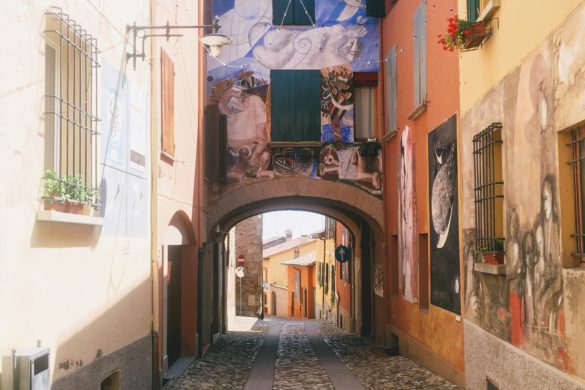Year after year, Italy continues to be a top vacation destination for travelers. That’s no surprise to me, someone who’s been enamored since my first trip, continually returns and sings its praises to prospective clients.
What’s not to love? Italy is steeped in rich history, grand architecture, food and wine, culture, lifestyle, picture-perfect landscapes and gregarious people. All combined, it’s enough to make the most unfeeling traveler fall in love. And fall hard.
But for those who haven’t been, the thought of visiting a foreign country can be daunting and overwhelming.
Here are some essential tips that will help you relax and enjoy your first trip.
Italy Travel : Essential Tips For Making the Most of Your Trip
1. Adopt the Right Attitude
Italy’s lifestyle and culture are very different from that of the United States. But, that is exactly why you are visiting, isn’t it? To experience something new, exciting and different.
Honestly, if you’re expecting it to be the same, or will be disappointed when you find that it isn’t, I would advise you to stay home and save your pennies. It’s best to be mentally prepared for the differences and adopt a relaxed and positive attitude before you go. Be ready, willing and open for everything.
If something doesn’t work out as planned, and it will happen, don’t revert to what I call the “comparing Italy to America syndrome.” It’s offensive and rude to continually complain to hotel or wait staff about how things are done in America.
Making statements like “This isn’t the way we do it back home”, or “In America, we always get ice with our drink” will quickly get you labeled as an “Ugly American” and it won’t solve any problems.
Remember, you’re there to experience their country, not convince them that your country’s way is better.
2. Understand the Differences
One difference is space – it’s at a minimum – so hotel rooms and bathrooms will likely be smaller than what you’re used to. Some older, charming budget hotels don’t have elevators or air conditioning, so if these are important to you, you’ll likely spend more for these creature comforts taken for granted back home, because many are considered a luxury in parts of Italy.
It’s important to be aware of meals and meal times as well. Italians eat three meals a day, and make several stops at the local bar to down a cup of espresso with lightning speed. Breakfast consists of a roll, or cornetto and a cappuccino (never after 11 am) or espresso. Don’t expect a full American breakfast.
Lunch is usually served during a very limited window around mid-day. You’ll likely be out of luck for a good lunch after 3:00 pm as most reputable places don’t offer continuous service. Typically dinner isn’t served until at least 7 or 8pm, though locals eat even later. If you find yourself hungry out of normal meal times, head to a wine bar or grab a slice of pizza to go. When all else is closed – opt for gelato!
3. Learn (some of) the Language
You don’t need to be fluent in Italian to visit, but learning a little goes a long way. You’ll find people in larger cities speak English, but don’t expect that in tiny villages or off-the-beaten-path locations. Even if the plan is to stick to big cities, it’s polite to at least learn a few basics before you go. It’s fun, easy and you’ll get better treatment from locals. I recommend you learn the basics and use them often.
Bring a good menu translator or at least a list of foods you don’t want to eat when traveling. If you have any food allergies, it’s also a good idea to write them in Italian on index cards and carry them with you to show your waiter.
4. Know When to Go
Summer months may be the best time for families with kids to travel to Italy because their schedules easily allow it – but keep in mind, traditionally it’s very hot in the summer and you’ll be joining everyone else traveling during this time, so large crowds will be the norm.
Much of the country takes their vacation in August, so many places where you’d like to eat or shop may be closed. Tours and guides will likely be booked well in advance. It’s also the most expensive time to travel, so airfare and hotel rates will be at a premium.
Instead opt for an off-season visit, in spring or fall, which can offer lower prices, lesser crowds, better availability for excursions and more pleasant weather.
5. When it Comes to Planning, Less is More.
Most people go to Italy with a mile long checklist and run through, checking things off at a marathon pace, in order to get it all in. That’s Italy done wrong. It’s impossible to see everything, so don’t try.
Depending on how many days you have, stick to larger cities, which are easy to get to and spend a minimum of three days in each place. Don’t pack too much into your daily itinerary. Italy is a country meant to be savored at a slow pace – so adopt a slow travel and slow dining philosophy. Build in lots of downtime to watch the museum of life go by and soak up the local atmosphere. That’s Italy done right!
6. Getting Around
If you are sticking to the larger cities of Rome, Venice, Florence, Milan, Bologna or Naples, there is no need for a car. Italy’s high-speed train system is fast, clean, and efficient. However, if you plan to explore more remote areas in Tuscany, Umbria or Le Marche, you’ll have the most flexibility by renting a car. For those who want to splurge, hiring a private car and driver is a relaxing and stress-free option.
Be prepared to walk more than you ever thought possible. Fashionistas, leave the stilettos home and opt for comfortable, yet stylish shoes. It won’t hurt to pack a few extra Band-Aids for much-needed blister relief, either.
Planning your first trip to Italy and don’t know where to start? I’d love to help! Click here to find out more.


